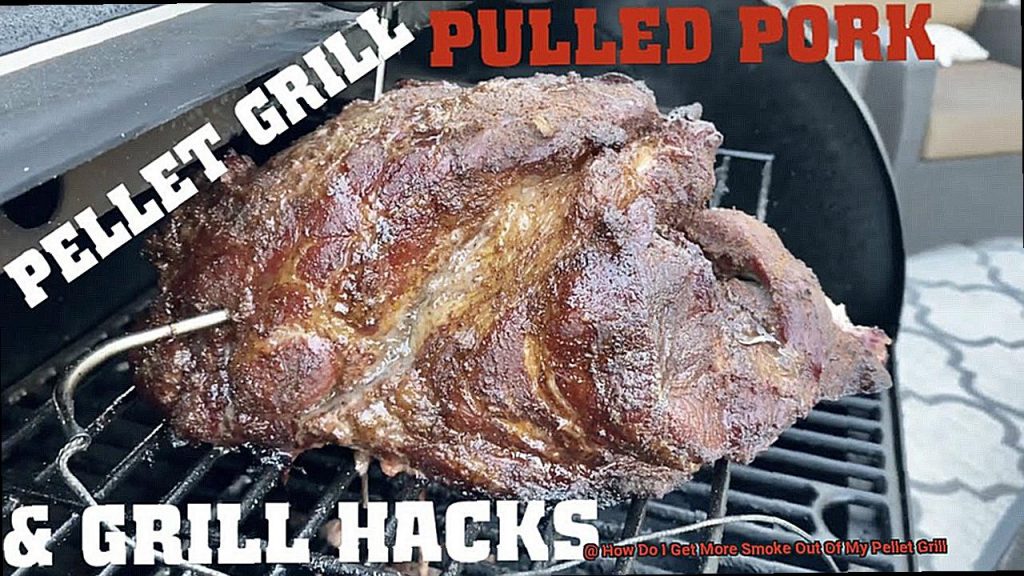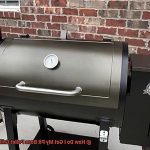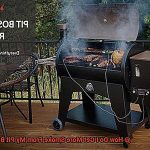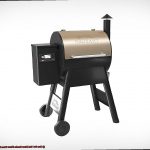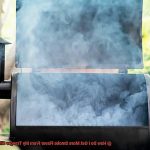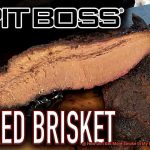If you’re the proud owner of a pellet grill or smoker, you know that cooking with wood pellets is a game-changer. The unique smoky flavor they impart on your food is simply unmatched. But what if you want more smoke? What if you’re after a stronger flavor profile for your meats, veggies, or seafood? Fear not, my fellow pitmasters and grill enthusiasts. Getting more smoke out of your grill is a common quest, and we’ve got some tips and tricks to help.
First things first: selecting the right wood pellets is crucial in achieving a stronger smoky taste. But it doesn’t stop there. Proper airflow within your grill plays an equally significant role in generating more smoke. Learning how to optimize airflow can take your smoking game to the next level. And if you really want to crank up the smoke output, consider using a smoking tube or smoke shelf.
In this blog post, we’ll delve into all the ways you can get more smoke out of your pellet grill. From choosing the right pellets to mastering airflow techniques and utilizing smoking accessories – we’ve got you covered. So let’s get smokin’ and make this barbecue season one for the books.
Contents
What are Pellet Grills?
Pellet grills have revolutionized the outdoor cooking scene, providing a versatile and efficient way to cook your favorite meals. These grills use wood pellets as fuel, which are fed into a hopper and ignited by an electric heating element. As the pellets burn, they produce smoke and heat that provide consistent temperature control, making them ideal for slow-cooking meats like brisket or pork shoulder.
One of the main advantages of pellet grills is their ability to maintain a consistent temperature throughout the cooking process. This is thanks to an electronic thermostat that regulates the amount of pellets fed into the firebox. This feature allows for easy cooking without having to constantly monitor and adjust the grill.
In addition to their temperature control, pellet grills are also versatile and can be used for smoking, roasting, grilling, and even baking. Some models even come with additional features such as built-in meat probes and WiFi connectivity that allow you to monitor your food’s temperature from your smartphone or tablet.
If you want to add more smoke flavor to your food, there are a few tips and techniques to follow. First, choose pellets made from 100% hardwood for maximum smoke production. You can also try soaking your pellets in water before use to increase their moisture content and smoke production.
Temperature also plays a crucial role in smoke production. Lower temperatures between 180-225 degrees Fahrenheit will allow your pellets to smolder for longer periods of time, producing more smoke. Additionally, using a smoke tube can slowly release smoke as it burns, adding extra flavor to your food.
When cooking with a pellet grill, it’s important to give your food enough time to absorb the smoke flavor fully. Slow-cooking meats like brisket or pork shoulder at lower temperatures will allow maximum smoke absorption and a richer flavor.
Choosing the Right Pellets for Maximum Smoke Production
If you’re looking to elevate your grilling game with maximum smoke production, you’ve landed in the right place. As an expert in choosing the right pellets, I’m here to share some valuable insights.
Firstly, it’s essential to understand that not all pellets are created equal. Every type of wood used in making pellets has its unique flavor profile and smoke characteristics. Therefore, when selecting pellets for maximum smoke production, it’s crucial to consider the type of wood used.
Hardwoods such as hickory and oak produce a stronger, more robust flavor and more smoke than fruitwoods like apple or cherry. For that bold smoky flavor, opt for pellets made from these hardwoods. However, if you prefer a milder smoky flavor, fruitwood pellets like apple or cherry might be more your thing.
Additionally, some pellets are blended with other types of wood to create a unique flavor profile. For example, mesquite pellets can be blended with oak to create a milder yet still smoky flavor. So, don’t be afraid to experiment with different blends until you find the perfect one for your taste buds.
Here’s a pro tip – always choose pellets made from 100% hardwood with no filler woods like alder or pine. Filler woods can produce less smoke and may even taint the flavor of your food. Therefore, ensure you read the label carefully before making your purchase.
Lastly, proper storage is crucial in maintaining the quality and smoke production of your pellets. Store them in a dry, cool place away from sunlight and moisture to prevent them from absorbing unwanted odors or flavors. Trust me; proper storage is worth the extra effort.
Temperature Control for More Smoke Production
Look no further than temperature control on your pellet grill. The temperature of the grill is the key factor in determining the amount and quality of smoke produced. Achieving optimal smoke production requires maintaining a consistent temperature range between 180°F to 225°F.
But how can you ensure that your grill stays within this temperature range? One way is to adjust the grill’s settings or use an external thermometer to monitor the temperature. However, for even more precise temperature control, consider investing in a PID controller. This device continuously adjusts the grill’s settings based on real-time temperature readings, ensuring that your grill stays within the optimal temperature range and produces consistent smoke.
But what if you want even more smoke flavor? Enter the smoker tube or box. These devices are filled with wood chips or pellets and placed in the grill, adding additional smoke to your food. However, it’s important not to overheat them and cause excessive smoke production.
Don’t forget about the pellets themselves. Choosing the right pellets is crucial for maximum smoke production. Hardwoods like hickory and oak provide bold flavors, while fruitwoods like apple or cherry offer milder smoky tastes. Blending pellets can create unique flavor profiles, but always choose 100% hardwood pellets and store them properly to maintain their quality.
Using a Smoke Tube for Added Flavor
If you’re looking to elevate your pellet grill game, using a smoke tube is a must-try technique. As an expert in the art of smoking on a pellet grill, I can attest to the fact that the addition of a smoke tube can take your food’s flavor profile to the next level.
The process is simple. First, choose your preferred wood pellets to fill the tube with. Opt for hickory if you’re after bold and smoky notes, or try mesquite, apple, or cherry for a different flavor profile. Once your tube is filled, place it on the grill grates next to your food and light the pellets with a torch or lighter.
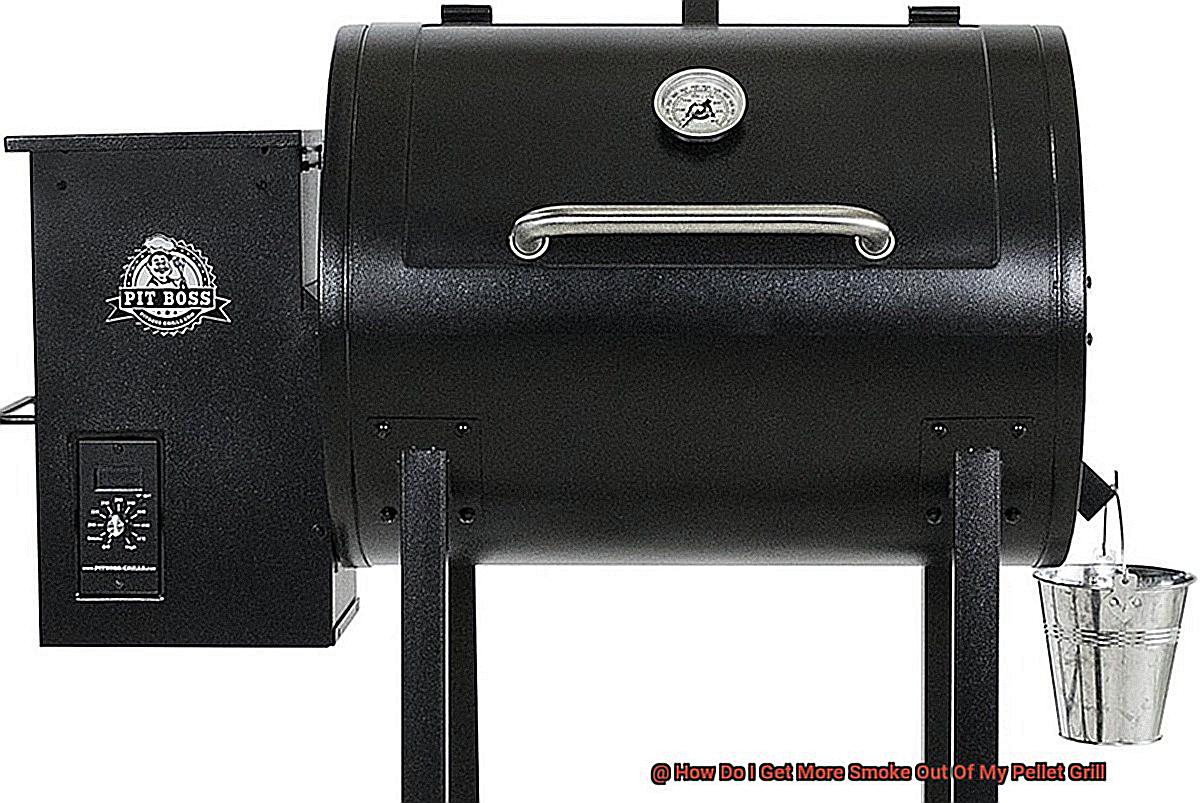
Pro tip: Wait a few minutes for the pellets to start producing smoke before placing your food on the grill. This will ensure that they infuse your dish with that irresistible smoky flavor.
Now, here’s where things get exciting. You can control the amount of smoke produced by adjusting the number of pellets in the tube and the airflow in your grill. If you’re after a more potent smoky flavor, add more pellets and close the grill lid to trap in the smoke. On the other hand, if you prefer a milder taste, use fewer pellets and open the grill lid slightly to let some of the smoke escape.
It’s worth noting that not all pellet grills are compatible with smoke tubes, so make sure to check your manual before giving it a go. Additionally, cleaning your grill after each use is crucial to prevent any residual ash or debris from affecting future dishes’ taste.
Adding Moisture to Your Pellets
But fear not, because there is an easy solution that can make all the difference – adding moisture to your pellets.
When wood pellets are too dry, they burn too quickly and produce less smoke. However, when moisture is added to the pellets, it slows down the combustion process, resulting in more smoke and a more flavorful cook. So, let’s dive into some methods and tips for adding moisture to your pellets to get maximum smoke and flavor.
Method 1: Use a Spray Bottle
One of the simplest ways to add moisture to your pellets is by using a spray bottle filled with water. A light mist of water sprayed onto the pellets followed by thorough mixing will distribute the moisture evenly. However, be careful not to overdo it with the water as too much can cause clumping and prevent proper airflow through the grill.
Method 2: Soak Your Pellets
If you have more time on your hands, soaking your pellets in water for at least 30 minutes before use is another great method. This allows the pellets to absorb more moisture and produce even more smoke during cooking. Before adding them to your grill, ensure you drain off any excess water.
Method 3: Add Flavored Liquids
For an extra burst of flavor, try adding flavored liquids like beer or fruit juice instead of water when adding moisture to your pellets. This will infuse your food with even more flavor and aroma, making for a unique and delicious meal.
Tips for Maximum Smoke and Flavor
In addition to adding moisture to your pellets, it’s crucial to choose high-quality pellets made from hardwoods like oak, hickory, or mesquite. These types of wood produce more smoke and impart a stronger flavor to your food. Experimenting with different types of wood and flavors until you find what works best for you is key.
Conclusion
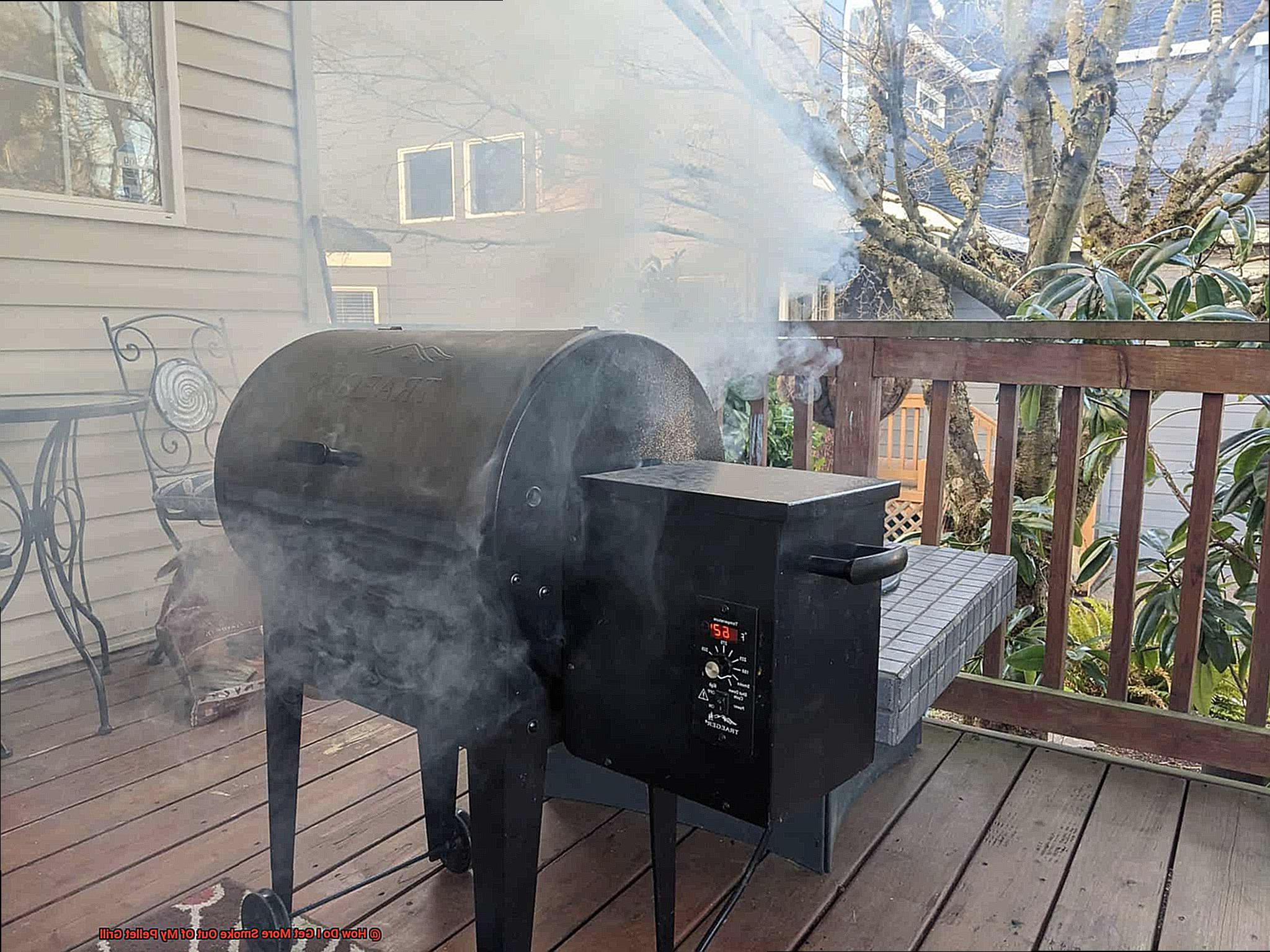
Slow Cooking Times for Maximum Smoke Absorption
It’s time to slow things down and let the smoke work its magic. Slow cooking times are the key to maximum smoke absorption on a pellet grill.
Why is this the case? When you cook at low temperatures for extended periods, the smoke has more time to infuse into the food, resulting in a richer, more robust smoky flavor. Pellet grills are designed to operate at lower temperatures than traditional grills, making them ideal for slow cooking.
To maximize smoke absorption, use the “low and slow” method. This involves cooking at temperatures between 225-250°F for several hours. The low temperature allows the meat to cook slowly, giving the smoke more time to penetrate the meat’s surface.
But that’s not all. The type of wood pellets you use can also affect the smokiness of your food. Different woods produce different levels of smoke, so it’s important to choose the right type of wood pellets for your desired flavor profile. For example, hickory pellets produce a strong, smoky flavor, while fruitwood pellets like apple or cherry produce a milder smoke flavor.
Maintaining consistent temperature control is also essential. Fluctuations in temperature can affect smoke absorption and cause uneven cooking. Using an automatic temperature controller or monitoring the grill’s temperature regularly can help ensure consistent heat.
Tips and Tricks for Getting More Smoke Out of Your Pellet Grill
Fortunately, there are several tips and tricks you can use to maximize the smoky flavor of your grilled dishes.
Choose the Right Pellets
The type and quality of pellets you use can significantly impact the amount of smoke produced by your pellet grill. Hardwood pellets like mesquite, hickory, and applewood produce more smoke than softwood pellets. Additionally, look for pellets with a higher percentage of lignin, as this natural substance in wood produces smoke when burned.
Use a Smoke Tube
A smoke tube is an accessory that can enhance the smoky flavor of your food by continuously releasing smoke throughout the cooking process. Fill the tube with wood chips and place it on the grill grates alongside your food for a consistent smoky flavor.
Increase Temperature
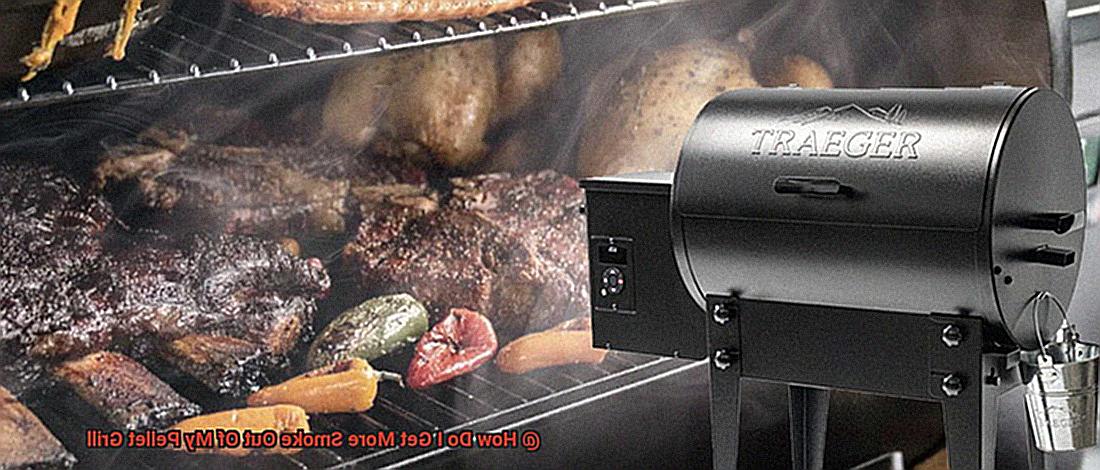
Increasing the temperature of your pellet grill can also help produce more smoke. As the temperature rises, pellets burn faster, creating more smoke in the process. However, be careful not to exceed your grill’s recommended temperature range.
Pre-Soak Wood Chips
Soaking wood chips in water before adding them to your grill can help produce more smoke by causing them to smolder instead of catching fire. Soak them for at least 30 minutes before placing them on the grill, but be careful not to oversoak them as this can create too much ash.
Keep Lid Closed
Opening the lid too often causes heat loss and reduces the amount of smoke generated by your pellet grill. Keep it closed as much as possible to maintain a consistent temperature and ensure that the smoke stays inside the grill.
XoBT8C1UKtQ” >
Conclusion
In conclusion, unlocking the full potential of your pellet grill and achieving a richer, smokier flavor is a goal shared by many grill enthusiasts. Fortunately, there are several ways to achieve this, from selecting the right wood pellets to optimizing airflow within your grill.
To start, choosing hardwood pellets like hickory or oak is essential for maximum smoke production. These woods produce a more robust flavor and more smoke than fruitwoods like apple or cherry. Proper storage in a dry, cool place away from sunlight and moisture also ensures optimal performance.
Adding moisture to your pellets can also slow down combustion and increase smoke production. Whether it’s using a spray bottle filled with water, soaking them in liquid for at least 30 minutes before use or adding flavored liquids like beer or fruit juice – experimentation is key.
Temperature control is another crucial factor in generating more smoke. Lower temperatures between 180-225 degrees Fahrenheit allow your pellets to smolder for longer periods of time, resulting in more flavorful meat. Slow-cooking meats like brisket or pork shoulder at lower temperatures will also maximize smoke absorption.
Lastly, smoking accessories such as a smoking tube or smoke shelf can help achieve a stronger smoky taste by providing additional space for wood chips or chunks.

